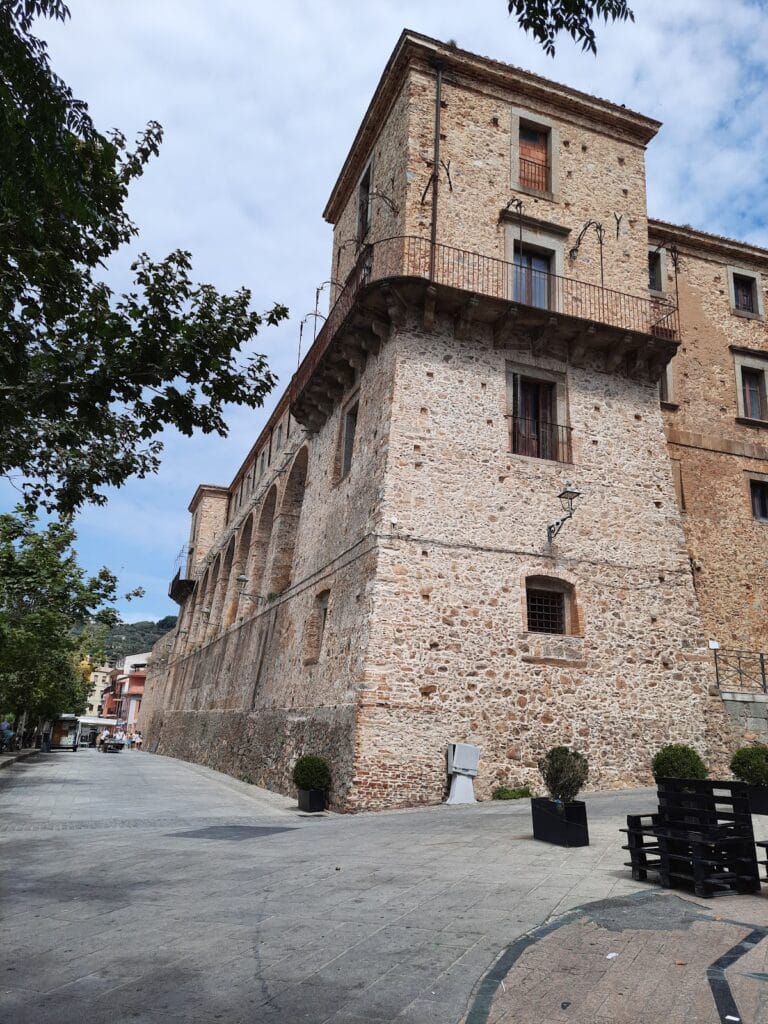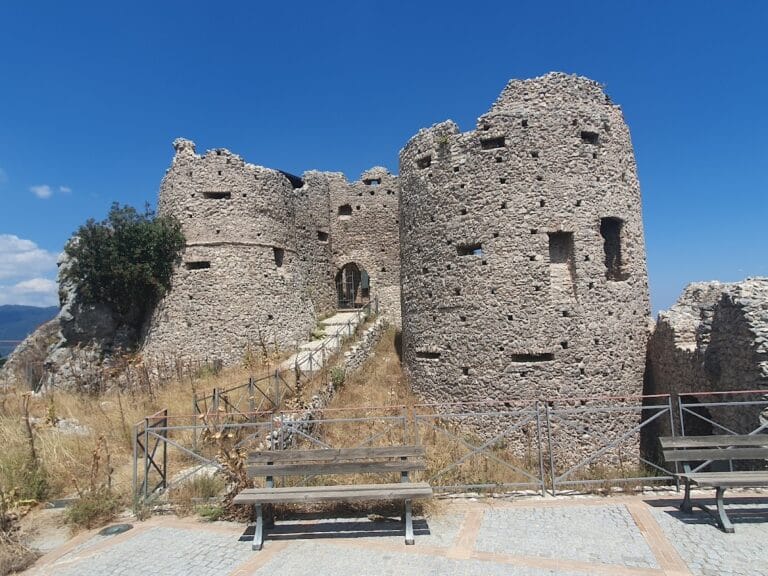Castello Galluppi di Caria: A Historic Neo-Gothic Residence in Drapia, Italy
Visitor Information
Google Rating: 4.5
Popularity: Low
Google Maps: View on Google Maps
Official Website: www.poro.it
Country: Italy
Civilization: Unclassified
Remains: Military
History
Castello Galluppi di Caria is situated in the municipality of Drapia in Italy. The castle’s origins trace back to the early 19th century when it was constructed by Pasquale Galluppi, a renowned philosopher, who used it as his summer residence. This building was erected on the site of an earlier 18th-century residence, indicating a continuity of habitation and presence in the area during that time.
Following its initial construction, the building underwent a significant transformation in 1920 when battlements were added. These architectural features, resembling the defensive parapets commonly found on medieval castles, gave the residence the appearance of a fortified castle. This modification was purely aesthetic and reflected the early 20th-century fascination with neo-Gothic and medieval styles rather than any military purpose.
The property stayed within the Galluppi family after Pasquale Galluppi’s death, maintaining its role as a private residence until it was later sold to the Toraldo family. A notable event in the castle’s history occurred on November 4, 1923, when Monsignor Giuseppe Roncalli, who would eventually become Pope John XXIII, visited the site. On this occasion, he dined in the garden alongside the local marquis, Toraldo, and members of the clergy. To honor this visit, a commemorative plaque was placed on the facade of the building.
Over the decades, the castle suffered from neglect and structural decline. The battlements added in the 1920s deteriorated, posing risks to the passing traffic below. After a prolonged 30-year legal dispute concerning the state of the property, the municipality of Drapia took ownership through expropriation in 2009. Restoration efforts followed to safeguard the building and its surroundings.
In February 2023, the restored site found a new cultural and educational purpose. It was repurposed as a center dedicated to introducing children and young people to philosophical thought, paying tribute to both Pasquale Galluppi and earlier philosophical figures such as Socrates and Plato. The former assembly hall within the building was converted into a library open daily to students and the local community, symbolizing a renewed role for the castle in intellectual and cultural life.
Remains
The Castello Galluppi di Caria is a two-story country house characterized by an irregular floor plan. Its architectural style incorporates several elements inspired by the neo-Gothic movement, notably pointed arch double windows that evoke medieval design traditions. A prominent balcony, equipped with a balustrade and flanked by curtain-like walls, contributes to the building’s striking silhouette and enhances its castle-like appearance.
The battlements, or crenellations, added in 1920, stand out as a defining feature of the building’s external profile. These decorative parapets were designed to simulate the look of a medieval fortress, emphasizing vertical lines and adding to the romanticized medieval aesthetic rather than serving any defensive function.
Surrounding the building is a garden that contains trees aged over a century, which enrich the historic atmosphere of the site by providing a natural setting that likely complements the summer residence’s original purpose. This garden setting was also the location of the notable 1923 dinner hosted for Monsignor Giuseppe Roncalli, commemorated today by a plaque fixed to the facade.
Photographs of Castello Galluppi highlight the main entrance and exterior views, capturing the distinct architectural details that contribute to the building’s character. While the interior layout and specific measurements have not been recorded in detail, the conversion of the former assembly hall into a library demonstrates the adaptation of interior spaces for contemporary use. Renovation efforts following municipal acquisition have preserved these key features, allowing the building to maintain both its historical and cultural significance.










